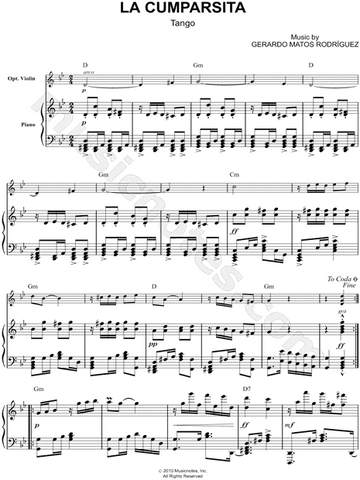
Tango is a style of music that originated in Argentina and Uruguay, influenced by both regional folk music and European classical dance music. Both Uruguayan and Argentine tango dance music is composed in the easily danceable time signatures of 4/4 and 2/4. Tango music can be instrumental, or it can feature a vocalist.
A tango sextet is a small ensemble with a piano, double bass, two violins, and two bandoneón players (the bandonéon is a close relative of the accordion). A tango orchestra, or orquesta típica in Spanish, is a larger tango ensemble that includes additional instruments like guitars and drums, as well as vocalists and tango dancers.
7 Characteristics of Traditional Tango Music
Tango music can be characterized by the following elements:
- A 2/4 or 4/4 time signature
- Heavy use of the tango rhythm— a 4/4 measure comprised of two dotted quarter notes followed by a quarter note, similar to the first half of a 3:2 clave bell pattern in son Cubano and rumba styles
- An angular, staccato rhythmic emphasis
- Strong influence of European classical dance music, including minuet, flamenco, polka, mazurka, and contradanza
- Additional influence from Argentine folk music, including the payada and milonga styles, and Uruguayan folk music such as pampas
- Spanish-language lyrics (although instrumental tango music is common)
- Often performed by a tango orquesta típica, featuring instruments like bandoneon (a cousin of the accordion), violin, and guitar
7 Traditional Tango Instruments
A tango orchestra, known in Spanish as an orquesta típica, tends to feature the following instruments:
- Double bass
- Guitar (either one or two)
- Bandoneon (a close relative of the accordion)
- Violin
- Flute and clarinet (often played by the same player)
- Piano
- Vocals
About the Business


